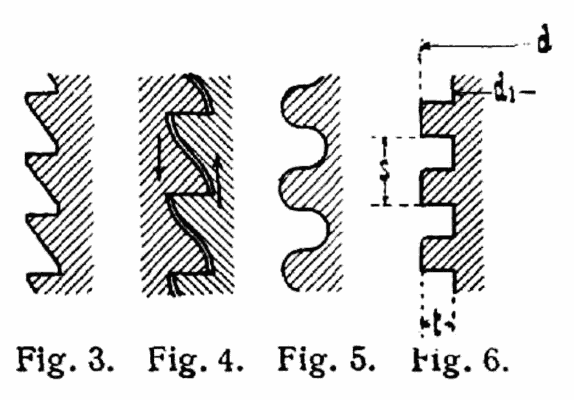 | ||
A leadscrew (or lead screw), also known as a power screw or translation screw, is a screw used as a linkage in a machine, to translate turning motion into linear motion. Because of the large area of sliding contact between their male and female members, screw threads have larger frictional energy losses compared to other linkages. They are not typically used to carry high power, but more for intermittent use in low power actuator and positioner mechanisms. Common applications are linear actuators, machine slides (such as in machine tools), vises, presses, and jacks.
Contents
- Types
- Square thread
- Acme thread
- Buttress thread
- Advantages disadvantages
- Alternatives
- Mechanics
- Running speed
- References
Leadscrews are manufactured in the same way as other thread forms (they may be rolled, cut, or ground).
A lead screw is sometimes used with a split nut also called half nut which allows the nut to be disengaged from the threads and moved axially, independently of the screw's rotation, when needed (such as in single-point threading on a manual lathe).
Types
Power screws are classified by the geometry of their thread. V-threads are less suitable for leadscrews than others such as Acme because they have more friction between the threads. Their threads are designed to induce this friction to keep the fastener from loosening. Leadscrews, on the other hand, are designed to minimize friction. Therefore, in most commercial and industrial use, V-threads are avoided for leadscrew use. Nevertheless, V-threads are sometimes successfully used as leadscrews, for example on microlathes and micromills.
Square thread
Square threads are named after their square geometry. They are the most efficient, having the least friction, so they are often used for screws that carry high power. But they are also the most difficult to machine, and are thus the most expensive.
Acme thread
Acme threads have a 29° thread angle, which is easier to machine than square threads. They are not as efficient as square threads, due to the increased friction induced by the thread angle. ACME Threads are generally also stronger than square threads due to their trapezoidal thread profile, which provides greater load-bearing capabilities.
Buttress thread
Buttress threads are of a triangular shape. These are used where the load force on the screw is only applied in one direction. They are as efficient as square threads in these applications, but are easier to manufacture.
Advantages & disadvantages
The advantages of a leadscrew are:
The disadvantages are that most are not very efficient. Due to the low efficiency they cannot be used in continuous power transmission applications. They also have a high degree of friction on the threads, which can wear the threads out quickly. For square threads, the nut must be replaced; for trapezoidal threads, a split nut may be used to compensate for the wear.
Alternatives
Alternatives to actuation by leadscrew include:
Mechanics
The torque required to lift or lower a load can be calculated by "unwrapping" one revolution of a thread. This is most easily described for a square or buttress thread as the thread angle is 0 and has no bearing on the calculations. The unwrapped thread forms a right angle triangle where the base is
where
Based on the Tlower equation it can be found that the screw is self-locking when the coefficient of friction is greater than the tangent of the lead angle. An equivalent comparison is when the friction angle is greater than the lead angle (
The efficiency, calculated using the torque equations above, is:
For screws that have a thread angle other than zero, such as a trapezoidal thread, this must be compensated as it increases the frictional forces. The equations below take this into account:
where
If the leadscrew has a collar in which the load rides on then the frictional forces between the interface must be accounted for in the torque calculations as well. For the following equation the load is assumed to be concentrated at the mean collar diameter (dc):
where
Running speed
The running speed for a leadscrew (or ball screw) is typically limited to, at most, 80% of the calculated critical speed. The critical speed is the speed that excites the natural frequency of the screw. For a steel leadscrew or steel ballscrew, the critical speed is approximately
where
